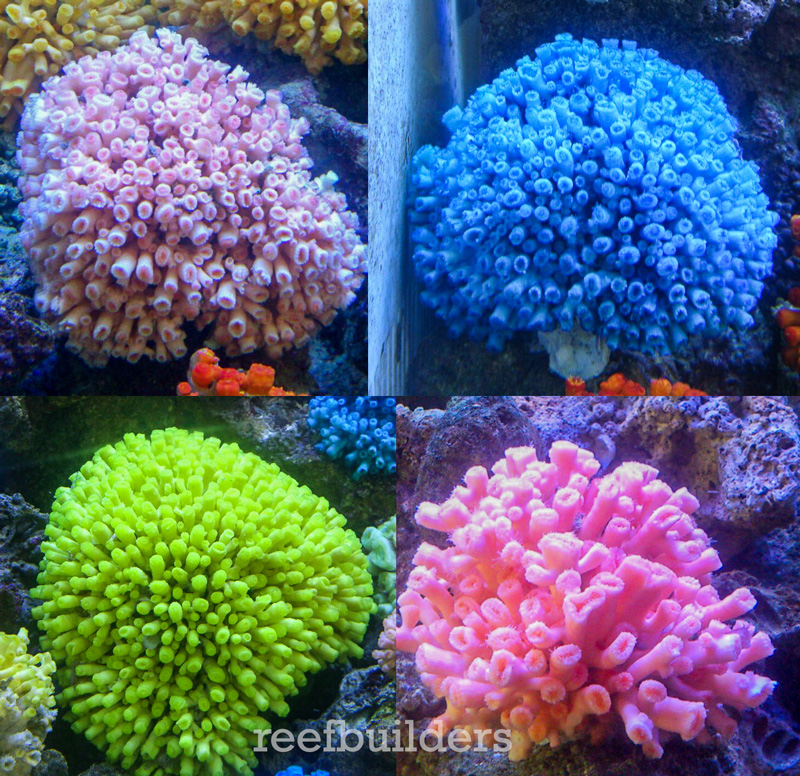In the Ocean, and especially with corals, there’s still plenty left for us to discover, such as these incredibly Azoox corals being collected in the Middle East. When we first received this crop of images from a coral collector in Tehran, we couldn’t comprehend what we were looking at, and the full tank shot looked like it might be full of artificial corals.

However, once we got the coral closeups it was clear that these were no fake corals, but they are a kind of screaming colorful azoox coral the likes of which we have never seen, and we’re still unclear what we’re looking at. The other natural response to these unnaturally colored corals is that perhaps they have been dyed, but the very idea of dying corals with fake colorant is a uniquely Asian concept; when we asked if these corals were dyed, for posterity, the response was one of befuddlement like “why would anyone dye corals which are already colorful?”
Despite these azoox corals’ unbelievably bright colors, there are natural examples of these pigments in nature that at least assure us that these colors are possible; the pink is found in some Tubastrea, the radioactive green pigment is seen in Halcurias anemones, and the blue is sometimes apparent in the very rare Arcohelia coral colony.
The truly orange colonies of Azoox corals appear to resemble to infrequently seen Dendrophyllia arbuscula which usually shows that deep orange coloration. The presence of the branching D. arbuscula is important because it is one of the thinner-branched Azoox we have actually seen in real life and yet, in these collections it is the thickest of the branched Azoox corals meaning that most of the other corals are dramatically thin branched compared to any Azooxanthellate corals the hobby is familiar with.



The remaining thin branched and extremely colorful azoox corals are completely undocumented, but our best guess as to their identification falls somewhere between Cladocora and Eguchipsammia – neither of which are known to exist in these types of colonies and in such dense clusters. In just the right habitat we could imagine Eguchipsammia growing into such lush, and compact colonies of closely spaced corallites – indeed some of the corallites and colors do correspond to Eguchipsammia. But the overall caespitose or “ball-shaped” cluster of corallites corresponds more to Cladocora, a species which is only known to be brown and zooxanthellate, and furthermore, not really documented in this region.

The partial answer to these corals’ mystery is their collection location in the Persian Gulf, near the Iranian town of Bandar Abbas, in the Strait of Hormuz. This politically charged part of the world is better known for geopolitical power-jostling than natural science exploration so we are not surprised it has taken so long for someone to dive to the 40 to 50 meters (130-165 feet) depth where these corals supposedly occur in particular abundance.
Even if these Azoox corals were stark white, or just a more pedestrian shade of brown and yellow, their existence in such abundance and diversity is remarkable unto itself and it lends evidence to some epic Azooxanthellate reefs in this region of the Persian Gulf. There is practically no chance of this particular crop of Azoox corals ever making it to the broader aquarium market in significant numbers, but simply knowing corals like these exist is exciting enough for coral junkies like us.









